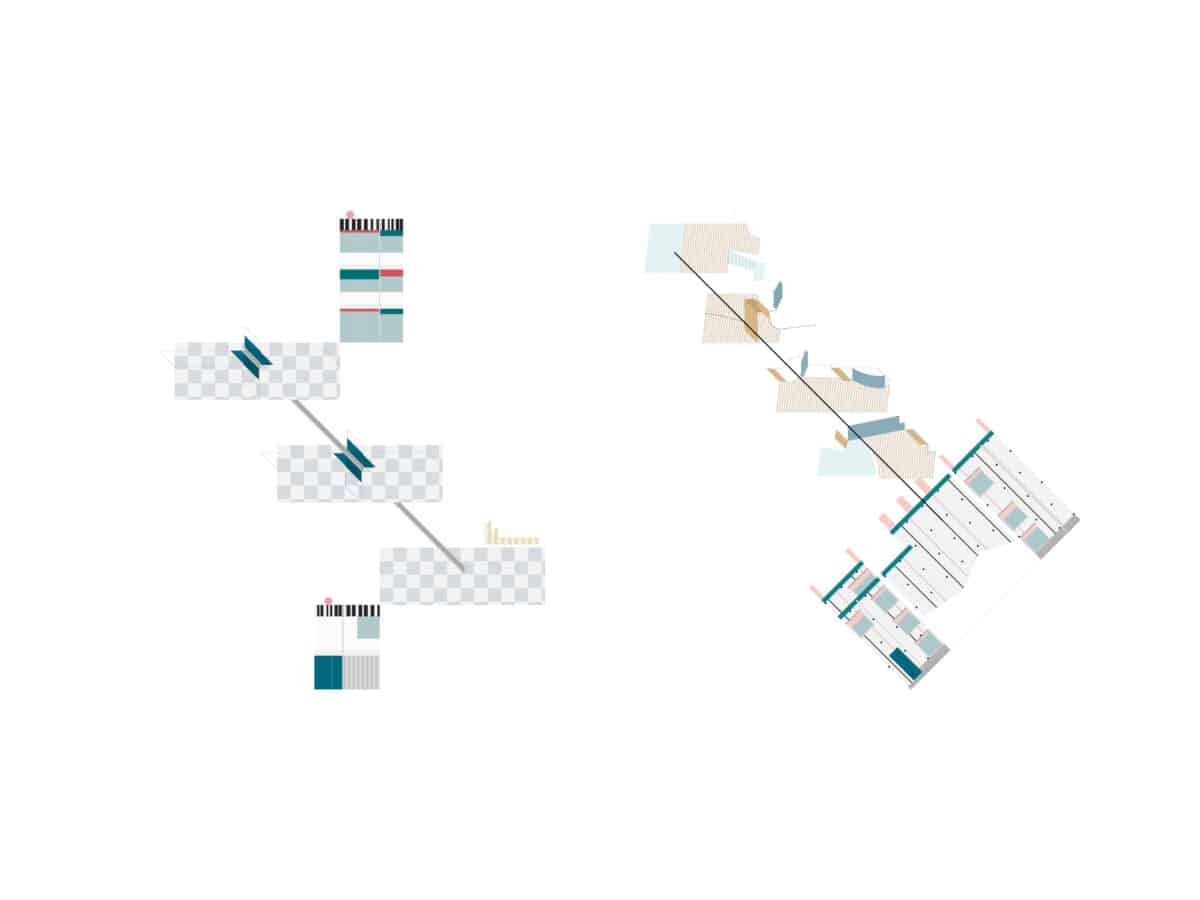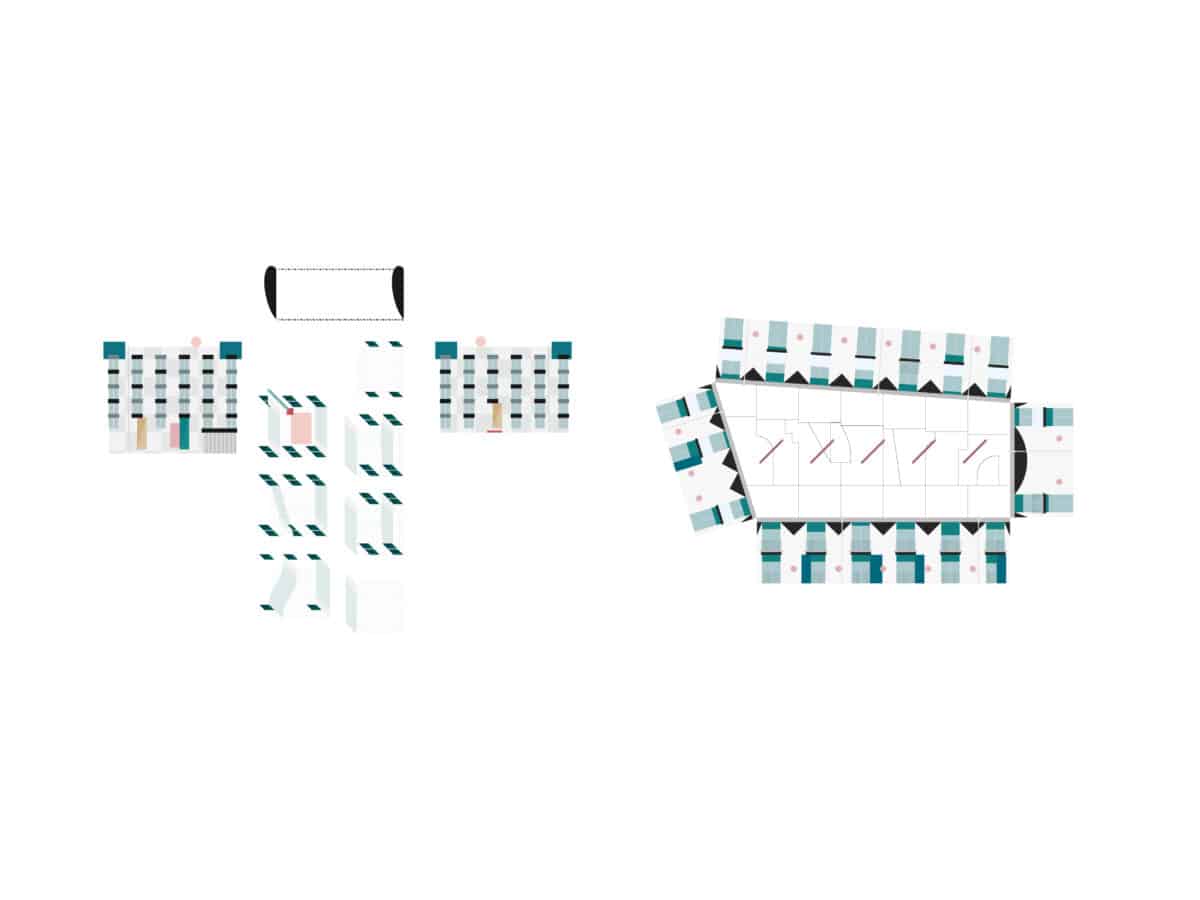fala: comprehensive
– fala
This is the second of eight articles in which the partners at fala examine different approaches to drawing and imagery within their practice as designers.
Normally, a project is depicted through a series of plans, sections, elevations, and some axonometric drawings, perhaps – every aspect of it explained and documented. We imagined a drawing that would say it all at once. At the time we were looking at some complex unfolded projections made by aDVVT, and were intrigued by how everything was brought together in one single figure.

A comprehensive drawing is a summary of a project. But it is never complete in the sense of incorporating all the projections. It is fragmented and selective. The comprehensive drawing brings together key elements of a project. It usually unfolds from the plan, and from there works with lines and hatches. It is both flat and volumetric and takes apart each building differently depending on the logic of the project. Some are laid out in layers: consecutive surfaces of floors and ceilings; bends of intricate walls in between, and roofs. Some are explosions of elements. Some suggest a complete volume, while others are disassembled into clashing surfaces. Columns are often exaggerated to highlight connections between levels and become important anchors. Some facades are ignored and others are continued as an endless pattern. We would love to have clear rules and a defined system that applies to all the drawings, but different projects demand different approaches.


Parts of these drawings find precise points of connection – it doesn’t fall apart into unrelated chunks. The project’s materiality is also taken into account. Elevations, pavements, and accentuated elements coexist in the thin black lines, and a drawing can include the smallest elements: doors and door handles, kitchens and kitchen hoods, lamps, mirrors, and so on.
It can get complex and baffling, but it creates a stimulating opposition – a project can live as a thick brochure of execution drawings, or as one page. Both are valid. Perhaps it is the oneness or the all-at-once quality that fascinates us. Comprehensive drawings are rarely done midway through a project. They are always a sort of conclusion, allowing for a final account of the community of elements, taking it apart and putting it back together, one last time.
